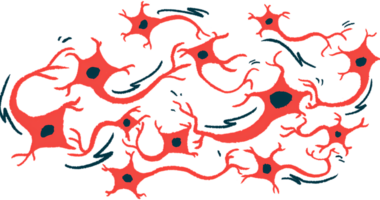Ultrasound technology offers way to peek into brain’s molecules
Researchers hope to understand how Parkinson’s develops

A clinical trial will use a noninvasive, ultrasound-based technology to better understand how Parkinson’s disease develops and progresses at the molecular level.
The technology, developed by researchers at Rice University in Houston, allows proteins to flow from the brain into the bloodstream, and was previously used in a mouse study to assess the delivery of gene therapy based on gene products from a small number of brain nerve cells, or neurons.
By extending this research to individuals with Parkinson’s, researchers hope to uncover valuable insights into the disease’s molecular mechanisms and potentially inform the development of targeted therapies.
“We are particularly excited about this technology, especially since our work has already led to a funded clinical trial with our colleagues at Baylor College of Medicine and MD Anderson Cancer Center,” Jerzy Szablowski, PhD, assistant professor of bioengineering at Rice and the study’s leader, said in a university news story.
The study, “Acoustically targeted measurement of transgene expression in the brain,” was published in Science Advances.
Gene therapy tools
Each gene can be thought of as a set of instructions that tells a cell how to make a specific protein, which affects how the cell operates and responds to its environment. Knowing which genes are active or inactive in the brain could offer insights into what happens in neurodegenerative diseases like Parkinson’s.
Current methods to study gene activity in the brain are limited. For example, a biopsy can provide molecular data based on a sample of cells taken from the brain, but it’s an invasive procedure that may disrupt normal brain function.
To get around this limitation, Szablowski’s team developed a technology called Recovery of Markers through Insonation (REMIS) for noninvasive measurement of gene activity, including that of gene therapy, in the brain.
“Gene therapy is one of the most exciting frontiers in medicine, but we need to have tools to know whether the gene therapeutic reaches the part of the brain it’s supposed to and works in the ways intended,” Szablowski said. “REMIS provides a nonsurgical option to do so.”
To test the technology, genes were delivered into mice’s neurons so they could produce protein markers on their own. These markers were designed to exit the neurons and enter the brain’s interstitial space, the fluid-filled areas between neurons. From there, the markers got released into the bloodstream.
Ultrasound waves, when applied to specific brain regions, temporarily open the blood-brain barrier, a protective layer that prevents many substances from entering or exiting the brain. This controlled opening allowed the markers to pass from the brain into the bloodstream. Once in the blood, they were detected using standard lab tests.
“Our study shows it is possible to measure gene expression [activity] and gene therapy delivery in specific brain regions with a relatively simple ultrasound procedure,” Szablowski said.
Researchers also checked if REMIS could measure gene activity originating naturally in the brain. To do this, they created a system in mice where a protein called GLuc was produced when neurons are active. The system was controlled with a compound called CNO, which makes neurons fire.
Compared with untreated mice, those treated with CNO had significantly higher levels of GLuc in the blood, indicating that REMIS can be used to peek into gene activity and its products in the brain.
“These results suggest that REMIS could be successfully used in small cohorts [groups] of animals, which is critical for large animal studies, or any potential clinical applications,” the researchers wrote.







